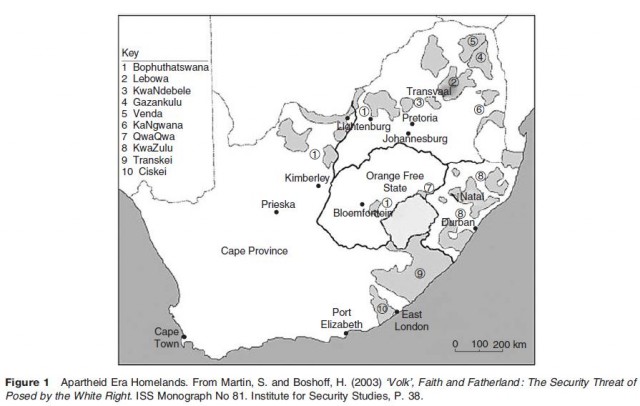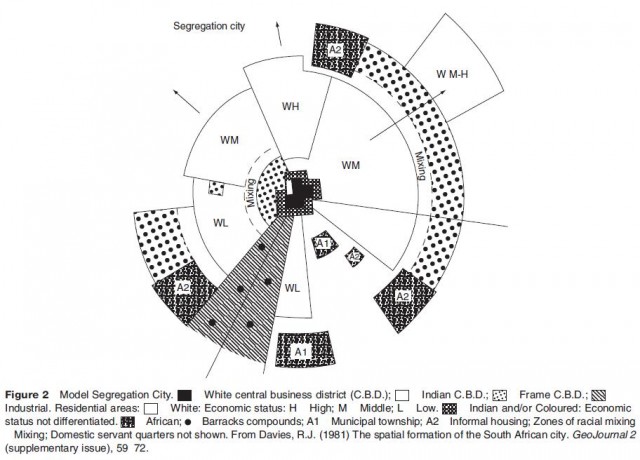From Segregation to Apartheid
Many of the building blocks of apartheid were in existence by the time the National Party was elected to power in 1948, leading some commentators to stress the continuity from pre apartheid to apartheid, from de facto to de jure segregation.
The Union of South Africa was formed in 1910 from the British Colonies of Natal and the Cape, and the Boer Republics of Transvaal and the Orange Free State. By the time of Union, the country had already largely been divided up along racial lines, in both rural and urban areas. The 1913 Land Act and 1936 Native Trust and Land Act apportioned 13% of the land in the Union to the black African population, who constituted around 75% of the total population. These Acts prohibited the purchase of land by black African people outside of the scheduled areas. It also made provision for the prevention of other means of independent black access to land, through squatting, leasing, share cropping, or labor tenancy. These Native reserves and Trust lands became the basis for the 'homelands', as illustrated in Figure 1.

In urban areas, too, there was already significant racial segregation. As early as 1847 the Cape Colonial government promulgated regulations for the establishment of separate locations close to town where members of indigenous groups (including Afrikaans speaking Coloured people) were required to live, if they were not housed by their employers or were not independent property owners in their own rights. In the light of increased black African urbanization, the Native (Urban Areas) Act was passed in 1923 to establish separate locations for the black African population, and to place limitations on migration to towns. The Slums Act of 1934 was also used as a means of removing black African people from the inner urban areas. This Act also allowed for the expropriation of Coloured and Indian land. These various means of racial segregation in urban areas, and racially stratified economic realities, gave rise to highly segregated cities, as Figure 2 illustrates.

In addition to spatial segregation, there were a number of other racially discriminatory laws and practices in existence before 1948. The black African population did not have voting rights, and the Coloured population in the Cape had their limited franchise diluted by laws passed in the 1930s. Through acts such as the Industrial Conciliation Act of 1924 and the Wages Act of 1925 certain jobs were reserved for white workers. Education was also highly segregated and funded differentially along racial lines.
While segregation had existed since the establishment of the Cape, there was an increase in legislation to ensure racial difference after the formation of the Union of South Africa in 1910. Many of the laws passed in the period between 1910 and 1948 were designed to guarantee the upliftment of poor whites. In the 1920s between 30% and 50% of all Afrikaners were in or close to the 'poor white' category. In 1939, almost 40% of adult male Afrikaners were unskilled. It has been argued that the National Party came to power in the light of an upsurge in poor white numbers after World War II at the same time as a black urban middle class was emerging, and in the light of the development of black opposition.